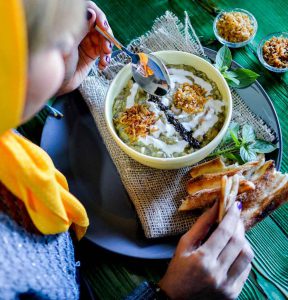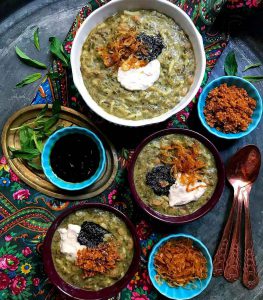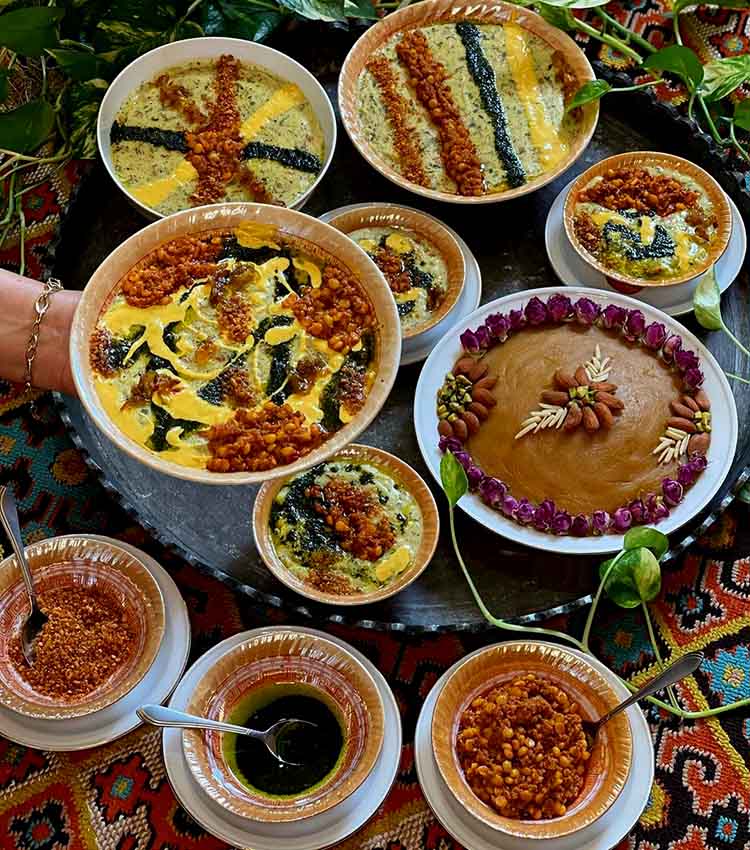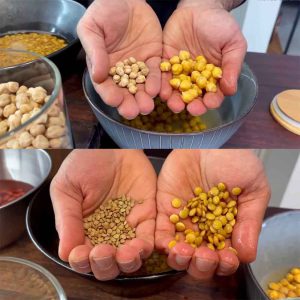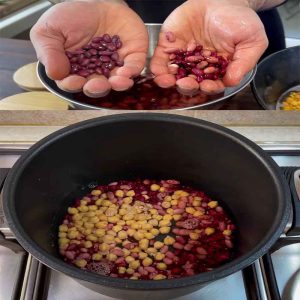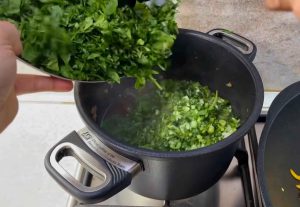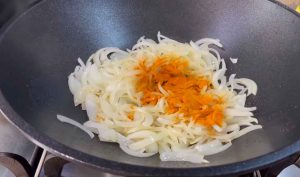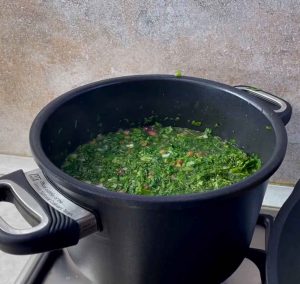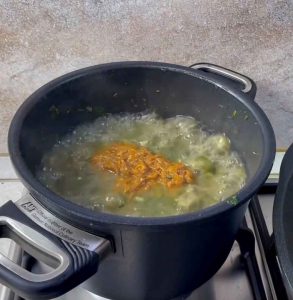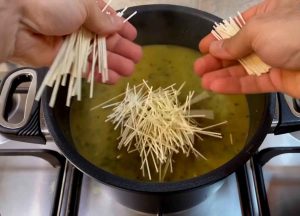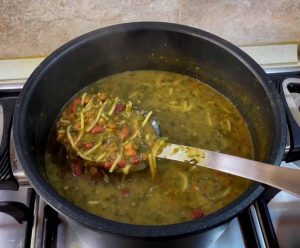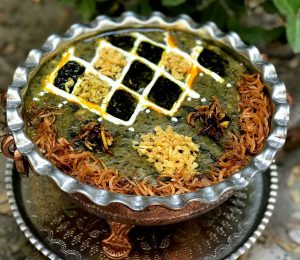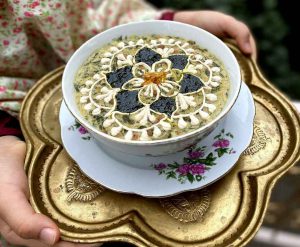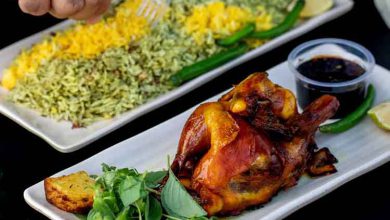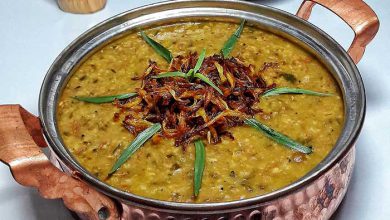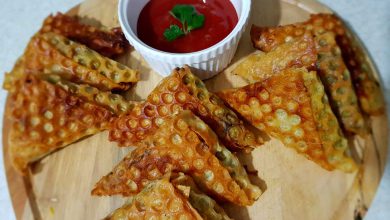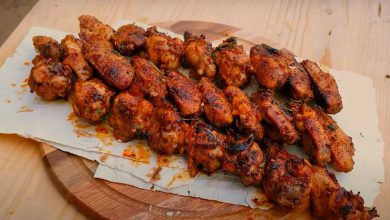Ash Reshteh Recipe | Persian Noodle With Herbs Soup
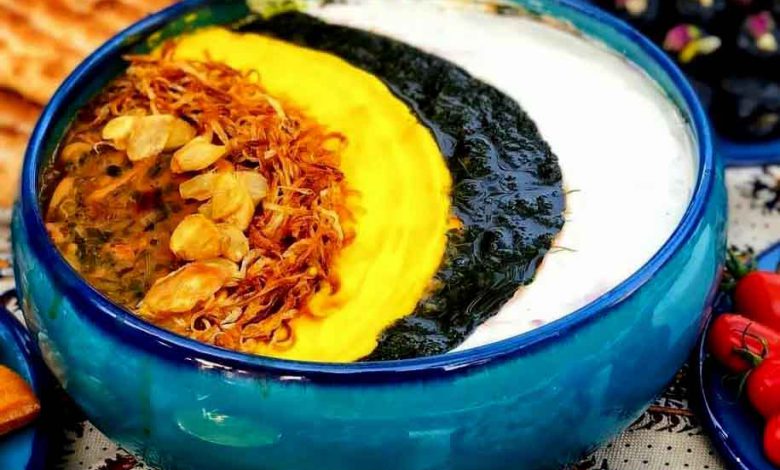
Ash reshteh is one of the fixed dishes of Iranian iftar tables in Ramadan. This delicious soup, in addition to its unique taste, has many properties due to the presence of beans, vegetables, garlic, and onion in it.
If you haven’t tried the unique taste of this delicious dish stay with us to learn how to prepare it.it is served with barbari bread or sangak bread.
Undoubtedly ash reshteh is one of the most popular Iranian dishes, especially the stringed type has many fans. this food with sholeh zard,shir berenj,halva havij, and zoolbia bamieh is the best food and dessert for Ramadan.
Defining ash is a difficult task. It is a concoction with legumes or grains or sometimes rice with vegetables and fried onions and sometimes dairy products. This appetizer will be decorated after cooking.
The traditional decorations are mint, onion garlic and vinegar, cumin, cinnamon and oil, sweet meatballs, simple minced meat (which is very common in Mashhad), and whatever the cook thinks will make it taste better.
There are sour and salty ingredients in the recipes of most of the ash, but there are some types of them that have a sweet taste and today few people try to cook them, but their traces can be seen in old cookbooks.
Related: Ghare ghoroot.
My experience table:
| My level of interest is from 1 to 10 | 10 |
| The ease of cooking | Hard |
| Served for | Dinner, Launch |
| Suggest for | Daily meal |
| What is served with? | Barbari bread, sangak bread |
History of ash:
In the old days, ash was called “ba” and if you see phrases like shurba or doghba and the like somewhere, know that it means the same ash.
Regarding the number and variety of ash, Ali Akbar Khan Kashani, Naseruddin Shah’s chef, wrote in the book “Food Table” that 24 types of dishes were cooked for Qajar Shah.
In his book, Nader Mirza spoke about 35 types of ash and Najaf Daryabandari wrote recipes for cooking about 60 types of ash in his book “Mustatab Cookery”.
In Iranian culture, there are many proverbs with ash. In addition to proverbs, Ash have found their way into the customs and important events of life and now we know many Ash by the names of events in our lives.
Like dental ash that is usually made when a child is teething, but mostly adults eat it! Or Ash poshte pa, which is cooked for a loved one when he goes on a trip and distributed among the neighbors.
We have different types of ash in Iran and we tell some of them here for you:
- Ash reshteh
- Ash anar
- Ash doogh
- Ash jo
- Ash sholeh ghalamkar
Now that we have understood the history of Ash in Iranian culture and customs it is time to go to how to prepare this delicious dish. In this article we want to tell you the recipe for ash reshteh, so be with us.
For: 4 people
Preparation: 30 minutes
Cook for: 2 hours
Ash reshteh recipe:
Ingredient:
| White beans (you can also use red beans) | ½ cup |
| Pinto beans | ½ cup |
| Chickpeas | 1 cup |
| Lentils | 1 cup |
| Ash vegetable (Spinach or beetroot, chives, coriander, parsley, dill) (From each in equal amount) | 1.1 pound |
| Garlic | 8 cloves |
| Large onions | 2 pcs |
| Dry mint | 2 tablespoons |
| Ash noodles | as needed |
| Curd | as needed |
| Salt and black pepper | as needed |
| Turmeric powder and oil | as needed |
How to make ash reshteh?
1. The most important task in cooking ash reshteh is soaking the beans, which helps to cook easily and in less time. We put each of the beans in separate bowls pour water on them let them soak for 5-6 hours and change the water 2 times to remove the swelling of the beans.
2. To prepare ash reshteh, we first pour the chickpeas in a colander, wash them, and pour them into a pot, pour 4-5 glasses of water into the pot and let the peas cook on medium heat. Pour the beans into another pot and pour 5 glasses of water on them.
3. Then we put it on the heat and first we increase the heat until the water boils and then reduce the heat to medium so that the beans are cooked over time.
Pay attention that the peas and beans should not be completely soft and crumbled.
4. As soon as you tested them and they were cooked and kept their appearance, we should remove them from the heat and keep them aside. Pour the lentils into a bowl pour water on it and let it soak for 30 minutes.
5. We clean and wash the vegetables and pour them in a colander spread a clean textile and pour the vegetables on the textile let them dry and grind them in a chopper or on the kitchen board.
We chop medium size (vegetables should not be finely chopped) and set aside.
6. We peel and wash the onions and chop them finely on the kitchen board pour oil into a pan and put it on low heat until it gets hot pour the onions in the pan and saute them until golden. Let them be fried and then pour them on a plate.
7. While the onions are frying, we peel the garlic, wash it, and chop it and when we pour the onions onto the plate we pour the garlic into the pan and (if oil is needed, we pour it into the pan again) fry and wait.
Saute until they are fried and pour on a plate. In order not to lose the properties of garlic, it is recommended to saute it very little in oil.
8. We immediately check the pan, if there is no oil in the pan, we pour oil in the pan again lower the heat pour the dry mint in the pan, and saute it.
As soon as the mints change color a little, remove the pan from the heat. We have it and keep it aside and fry it continuously so that the mint doesn’t burn and it doesn’t turn black.
9. Pour 1/3 of the water into the pot that we have prepared for cooking, put the lid on the pot, and put it on high heat so that the water boils faster.
When the water is boiling, drain the lentils in a colander. We pour and wash and pour into boiling water.
10. In the same way, we pour the cooked peas and beans into the boiling water. When we pour the beans into the water, we wait until the water boils again and then we add the green vegetables and immediately add 1 teaspoon of salt to it.
11. We add salt because the green color of the vegetables is preserved) and we pour half of the fried garlic, fried onion, fried mint, and a little turmeric into the pot do not leave the lid of the pot under any circumstances, and let it cook for 30 to 45 minutes. Cook the vegetables for a minute on medium heat.
12. After cooking the vegetables, we cut the noodles in half and pour them into the pot. After 15 to 20 minutes, we taste it. You can also add curd to it.
13. If you want to have both curd soup and pickle soup, you can divide the soup into two parts add vinegar to half of the soup, and add curd to the other half. Just be careful if you want to add curd to everything.
14. First, add the curd and test it, then if necessary, add a little salt along with black pepper. At any stage of cooking ash, if you feel that the water is low, use boiling water so that it does not affect the taste of the ash.
Pour the prepared ash reshteh into a bowl and decorate with fried onion, fried mint, and curd, and enjoy.
What is garlic?
Garlic is one of the oldest cultivated plants in the world, and is a hardy perennial belonging to the Liliaceae family. Other members of this family include onions, leeks, chives and shallots. They are distinguished by their pungent aroma and distinctive flavour.
The bulb is the most commonly used part of the garlic plant and is typically composed of eight to 20 individual teardrop-shaped cloves enclosed in a white, parchment-like skin.
One clove (4g) of garlic provides:
- 4Kcal / 16KJ
- 0.3g protein
- 0.0g fat
- 0.7g carbohydrates
- 0.2g fibre
- 25mg Potassium
Notes for ash reshteh:
- Kneading ash reshteh:
One of the problems that beginner cooks have with making this ash is that their ash may look crushed and pasty after cooking. The reason for this problem is the use of a small pot.
Make sure that the pot you are considering for cooking ash reshteh has a large empty volume so that the noodles are not crushed after the noodles are set.
- Set the noodle size:
One of the most common problems in cooking ash is that the amount of noodles used in it is too high, which causes the quality of ash to decrease and make it pasty.
To adjust the noodles, we must add the noodles little by little and mix them so that we can correctly determine the correct amount of noodles.
- For the beauty of ash reshteh, the vegetables should be coarsely chopped and without stems.
- It is better to use plenty of fried onions for the inside of the ash.
- Try to use the best type of noodles.
- Be sure to test the salt in ash so that it does not become salty due to the addition of curd.
- Curd will cut the ash, so it should not be boiled in ash.
- In terms of hygiene and health, be sure to boil the curd for 20 minutes.
- Chop leeks separately from other vegetables.
- In order not to spoil the soup, never leave it in the pot while cooking.
- You can increase or decrease the amount of beans in the ash.
- Oil makes the ash become glazed, that’s why it should be consumed in sufficient quantity.
FAQ:
1. What is Ash Reshteh made of?
Ingredients that are used in ash reshteh are thin noodles, curd, ash vegetables, chickpeas, white beans, lentils, pinto beans, and spice.
2. Is Ash Reshteh healthy?
Yes, of course.Ash reshteh is so healthy and has many benefits such as the body’s source of energy, a source of protein, the health of teeth and bones, and improving blood lipids and blood pressure.
3. How many calories are in Ash?
Every 3.5 ounce of that has 250 calories.
4. Does ash have protein?
Did you like a recipe for ash reshteh?
- If you have experience eating ash reshte, please say your comment.
- If you are looking for vegetarian food, I suggest you this food.
- You can ask me questions about ash reshte in the comments. I will answer your questions as soon as possible.
- if you make this soup and love the taste of it, please share your pic with us on @mealscook facebook & mail.
